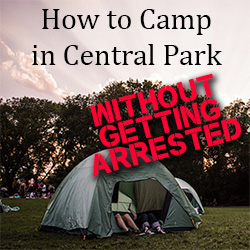Great- now other passengers roll their eyes at YOU!
I was the person who always groaned when a couple with a baby approached my row on an airplane. Sitting next to a crying, poopy-smelling infant seemed like the kiss of death. How could I possibly relax and enjoy my infinite entertainment choices (music, magazines, apps) with this distraction?
Now that I have an infant of my own, I’ve gotten by comeuppance. Flying to grandma’s house last week was a major source of stress; questions raced through my mind at 3am. Will the baby cry? What will I do if he cries? What if I can’t stop him from crying? What if everyone on the flight hates me? And worst of all, what if he has an explosive poop at 30,000 feet?
In hindsight, the pre-flight anxiety was worse than the actual trip! Having survived two flights with my baby, I’m passing on a few tips for other moms and dads. If you have experience traveling with a baby and have additional suggestions, please leave a comment below!
1. Consider the baby’s nap schedule
My four-month old is a crappy day napper, but he sleeps for 12 hours straight at night. Understandably, this night sleep is sacred! We don’t make any travel plans (when possible) that could interfere with his bedtime. When selecting a flight, opt for a departure and return that fall after wakeup and before bedtime (preferably 90 minutes before/after, in line with the NAPS system).
Our baby took one longish nap on each flight: 1 hour on the way out and 39 minutes on the way back (yes, those are long naps for him these days).
The plane’s constant hum and turbulence seem to have a calming effect on babies, so your little one will probably rack up some sack time during the flight.
2. Snag a bulkhead or an elusive 3 seater
We are not about to pay extra for seats, which makes it a challenge to score plum locations on an aircraft, where increasingly any seat not located in the middle of the last row is considered premium.
On our return flight, we were both assigned middle seats in adjacent rows, which added to my anxiety. We weren’t even sitting together! Logically, I knew we would end up seated together, as someone would likely be willing to switch seats given the prospect of sitting next to a baby for 5 hours. When facing this predicament, there are a few courses of action.
First, try calling the airline and pleading your case. If you are on a long haul or international flight, there may be a bulkhead seat with a bassinet. Calling the airline is the best way to secure one of these seats. On our domestic flights, this was not an option; calling did not help us snag a better seat– the rep told us to check the website closer to the flight. However, she did add our baby to my ticket as a “lap infant.”
Second, keep checking the airline website to see if more seats open up. Usually a block of seats is released 24 hours before the flight.
Third, arrive early to the airport on day of departure and ask the gate attendant to change your seats. On departure, the airline rep moved us to a 3-seater in the back row and said she would leave the third seat empty. We were able to put our car seat in the empty seat, without paying extra. We weren’t as lucky on our return flight, but we did get adjoining seats in the last row.
Note, the last row is baby central! Everyone upgrades and switches from the last row, so it tends to be the one left for desperate families with babies.
3. Bring a car seat stroller
A car seat stroller is the best option for a flight, since you can bring the car seat on board and strap it into the window seat if you score a 3 seater. According to the FCC, a car seat is the safest place for your child on an airplane. Make sure to confirm whether you have an FAA approved car seat before your flight. (Our Chicco KeyFit 30 had a small sticker stating it was approved).
While the car seat is safe, it might not be the most convenient option for breastfeeding moms. Our son is so long that his feet kept hitting the car seat when he stretched out on my lap to feed. Additionally, since I was feeding him at takeoff and landing, he was not in the car seat during these crucial times. And he fell asleep on my lap, not in the car seat.
The car seat would have been helpful on our turbulent landing, but he was already on my lap when the turbulence started and there was no way to safely get him into the car seat. If I am able to score a 3 seater on my next flight, I will strap the baby into the car seat for landing and descent, and will feed him by bottle.
4. Bring a pillow
Unless your baby breastfeeds upright and sleeps with his head on your shoulder (I wish!), you’ll want to bring a pillow. I opted to leave the Boppy and home and brought a standard size pillow; it was a comfy place for baby to sleep and was easy to stash behind me or by the window when it wasn’t in use.
If you are one of those lucky parents who have a baby willing to sleep on your chest past the newborn stage, then you won’t need a pillow and you probably don’t need a car seat. I’m envious of moms who wear the baby in a sling while they board and even on the flight– it seems way easier and involves less gear.
5. Prepare for an intense diaper change
Make sure to bring the diaper changing essentials (diapers, wipes, a change of clothes and a fold-out changing pad) in your carry-on baggage and hope your plane has a changing table in the bathroom!
Our first flight was on an older plane with no changing table, and the flight attendant instructed my husband to fold a blanket over the toilet seat. The diaper change was an intense experience– he came out of the bathroom after 10 minutes with sweat dripping down his face!
Don’t forget the hand sanitizer, as you never know what your baby (or his belongings) will touch in the bathroom.
6. Encourage baby to suck during landing
The most common advice given to traveling moms is to feed a baby during takeoff and landing to avoid ear discomfort. A flight attendant (and the Dr Sears website) assured us that this is more of an issue on landing, and that did seem to be the case on our flights. However, it’s tricky to breastfeed a baby on a descent that can stretch into a half hour or more of circling, bumping and steep drops in altitude. If you can’t feed the baby during this time, try a pacifier.
On our trip, I fed the baby just before takeoff and he slept through it. On the long and bumpy descent, baby started fussing so I held a pacifier to his mouth, which calmed him. He actually seemed to enjoy the frightening turbulence, while my husband and I were holding on to him for dear life!
7. Remember that everyone was a baby once
Yes, your baby might cry, scream, throw things and create the stinkiest poopy diaper imaginable. But try not to worry about what other passengers think of you. We were all babies once; we all cried, stank and interrupted someone’s sleep (probably on a nightly basis).
Those passengers may be giving you the stink eye, but they may be in the same boat in a few years!
Have you traveled with baby?
Share your flight tips with other readers by leaving a comment below!


















now u can travel anywhere with him!!!